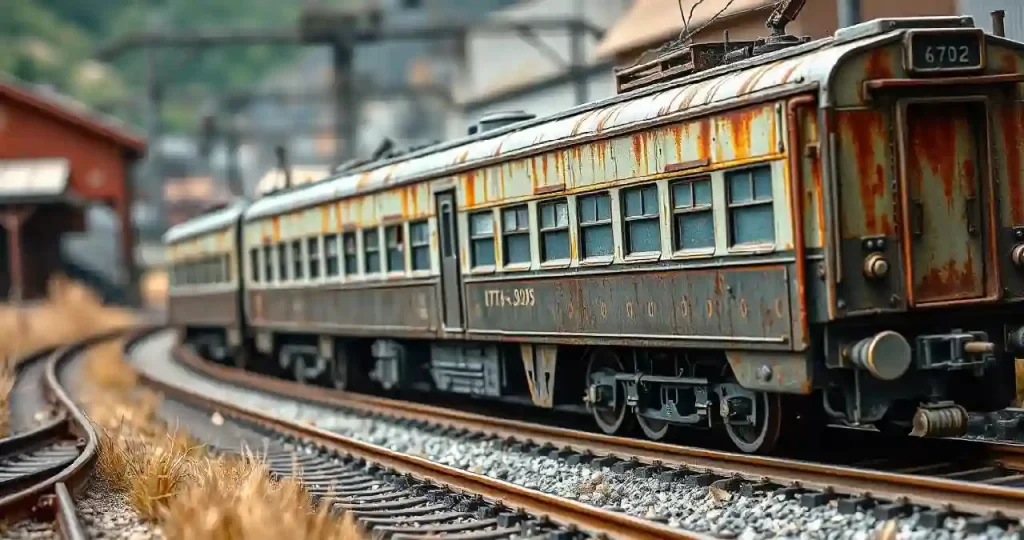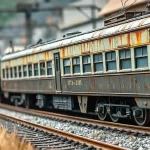Reality is the ultimate goal in different areas of our lives, and framing train models is no exception. Many experts in depicting train models hold the tilting trains from Japan as the model. Curiously, the kato 381 series weathering has helped in establishing the role model in the best way. The series has become a rewarding way to add authenticity and personality to rail models’ depictions. The following lines will guide you in traversing through the techniques and prodigies that kato 381 series weathering needs and offers.
What kato 381 series weathering is all about?
The kato 381 series weathering has become a favourite to the next generation of train enthusiasts. Its way of seamless operation and detailed design are adored by these professionals. The models of this series represent specific locomotive types. The series offers precision engineering and unique features thus making it a standout model. of railways layout. The kato 381 series helps the weathering process to heighten its features while integrity stays intact.
What do they mean by Weathering in Railroading Models?
The process of ageing and distressing a model train replicates the wear and tear the track will face as time elapses. The entire episode is known as weathering and includes the application of paints, powders, and washes. Applying these materials would help the users achieve faded effects, rust, grime, and dirt. The next-day train detailing procedure makes the train in the picture appear rusty. People thus think that the train in the picture has already undergone countless journeys. In the kato 381 series, weathering works to multiply the intricate details of a picture and converts the same into a realistic replica.
Why the rail enthusiasts focus on Kato 381 series weathering
Collectors favour kato 381 series weathering as the model perfectly resembles the tilting, the iconic express train from Japan. Weathering the model can help in the following ways:
- Highlighting features like the train’s roof, bogies, and tilting mechanism.
- To add depth and realistic features to the clean factory finish.
- Create tailored and unique displays that will tell you a story.
How should you prepare the kato 381 series weathering?
Clean and Prime the Model
Cleansing the kato 381 series weathering model is essential before we start the process of weathering. Start with wiping the surface with a soft cloth; dust and paint may create interference when paint is added.
Besides, priming is also essential; using primer ensures that the paint has stuck on the surface properly. Therefore, we will get a uniform surface for weathering. However, we will use a light shade of the primer. It will help the paints go on smoothly.
Mask the delicate parts
At the time of weathering with kato 381 series weathering, masking the delicate parts is essential. Use masking tape or liquid to cover areas like windows, decals, and areas where the weathering procedure will not be used. Making prevents accidents besides saving time. The user can thus concentrate on the weathering effects as the fear of damaging delicate components has gone.
Weathering Techniques for the kato 381 series weathering
The Fundamental Techniques
Dry Brushing
You can take up the dry-brushing technique to highlight the edges of the model picture. The technique will also help to simulate the worn areas. For handrails and footplates, use metallic tones.
Air-Brushing
In the areas where the picture shows undercarriage and bogies, applying thin layers of grime-coloured paint offers a sound effect. Creating gradients would bring a natural look.
The Advanced Techniques
Rust Effects
Rust effects with kato 381 series weathering involve adding rust-coloured powder or paint to areas prone to corrosion. These include vents, screws, and joints
Streaking Effects
Create vertical streaks by using a fine brush and diluted paint on the body. These will simulate dirt runoffs and rain.
Panel Line Accents
In the next phase, apply a panel line wash, It will help to stress out the crevices and details on intricacies. Remember to wipe away excess paint leaving remains in recessed zones.
The Final Touch
- Use gloss paints to bring oil stain effects near the moving parts.
- Dust the roof and lower sections with earth-toned powders. This will help to conjure the specks of dirt.
- Finally, seal the job with a matte finish spray. This will ensure durability and long sustenance.
What Common Mistakes do we make in kato 381 series weathering?
Several mistakes we may commit at the time of weathering by using kato 381 series weathering procedure. Some of these include
Over Weathering
Overdoing the process of kato 381 series weathering is the most common mistake in weathering. Proper performance will create a real effect. Adding an excess amount of rust or grime will make the model seem overused or unreal pattern. Take the help of a guide if you are a beginner. The person will tell you when to stop; achieving balance will help demonstrate the perfect work. You can also start with light weathering effects and build up gradually Removing may make the work worse.
Inconsistent Weathering
Avoid doing inconsistent weathering. Consult your guide; he will tell you the importance of matching the environment with kato 381 series weathering. Be it an urban commuter or a rural passenger train, matching the environment with the weathering effect is crucial. Trains commuting near factory areas may contain heavier soot, while rural commuters may accumulate additional dust.
Forgetting the final Sealing Procedure
Do not neglect the final step of weathering. A final coat after weathering helps in protecting the work. Seal the model you have prepared with a clear matte varnish. This will stay protected from tear, wear, and smudging.
The Final Words
The procedure of weathering with kato 381 series weathering helps heighten the collection of model trains. We have had a detailed discussion regarding the steps that you need to follow in doing the work. Following the kato 381 series will help you get stunning and realistic pieces for display. It catches the essentials of Japan’s iconic tilting trains.
However, you can surely try out other techniques within kato 381 series weathering if they appear to bring better results. Do not fumble to share your thoughts and outcomes with your guide.
Frequently Asked Questions
Q1. Is kato 381 series weathering worth it for beginners?
Ans: Yes. They can start with simpler techniques. Like dry brushing and light airbrushing. These will help to build confidence. Later, they can try advanced methods and achieve realistic outcomes.
Q2. Why rail enthusiasts should try kato 381 series weathering?
Ans: Weathering with kato 381 series weathering enhances the model outlook. These thus become an exceptional variety of products in the Railway’s collection or to your personal collection details.
Q3. Is kato 381 series weathering reversible?
Ans: You can adjust a kato 381 series weathering piece. Also, you can remove it and prepare a new one with added imagination.
Q4. Can I create rust effects on kato 381 series weathering? How?
Ans: Creating a rust effect on kato 381 series weathering is possible. Use acrylic paints, coloured wishes, or weathering powders to do it. You can apply these materials to the underbody and areas where rust usually accumulates.
Q5. How to protect the work from wear and tear?
Ans: Use a protective clear coat or clear varnish after finishing weathering. It helps to safeguard the work from wear and tear and ineffective handlers.


